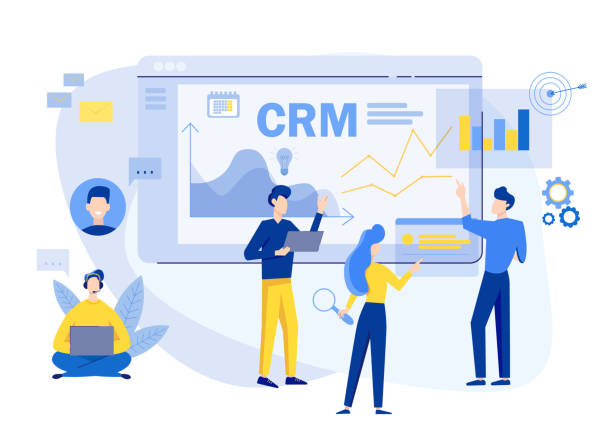
Introduction
Customer Relationship Management (CRM) systems have become essential tools for businesses in managing customer interactions, automating processes, and driving sales. However, as these systems store vast amounts of sensitive data, they have also become prime targets for cyber threats. In 2025, cybersecurity risks continue to evolve, making it crucial for businesses to stay ahead of potential threats.
This article explores the most common threats to CRMs and provides actionable strategies to mitigate them, ensuring data security and system reliability.
1. Phishing Attacks
Understanding the Threat
Phishing attacks remain one of the most prevalent threats to CRM systems. Cybercriminals use deceptive emails, messages, or websites to trick users into revealing their login credentials. Once attackers gain access, they can manipulate or steal valuable customer data.
How to Prevent Phishing Attacks
- Implement multi-factor authentication (MFA) to add an extra security layer.
- Educate employees on recognizing phishing attempts through regular training sessions.
- Use advanced email filtering solutions to detect and block malicious messages.
2. Insider Threats
Understanding the Threat
Employees, whether intentionally or unintentionally, can pose a significant risk to CRM security. Misuse of credentials, mishandling data, or falling victim to social engineering attacks can lead to data breaches.
How to Prevent Insider Threats
- Restrict access to sensitive CRM data based on user roles.
- Monitor user activity with audit logs and behavioral analytics.
- Establish clear security policies and ensure employees adhere to them.
3. Ransomware Attacks
Understanding the Threat
Ransomware attacks encrypt CRM data, rendering it inaccessible until a ransom is paid. These attacks can severely disrupt business operations and result in financial losses.
How to Prevent Ransomware Attacks
- Regularly back up CRM data to an offsite location or cloud storage.
- Keep CRM software and security patches up to date.
- Deploy endpoint detection and response (EDR) solutions to identify and neutralize threats in real-time.
4. Weak Passwords and Credential Theft
Understanding the Threat
Many users still rely on weak or reused passwords, making it easier for cybercriminals to compromise CRM accounts. Credential stuffing attacks use stolen usernames and passwords to gain unauthorized access.
How to Prevent Credential Theft
- Enforce strong password policies requiring complex and unique passwords.
- Encourage the use of password managers to generate and store credentials securely.
- Implement MFA to prevent unauthorized logins even if credentials are compromised.
5. API Vulnerabilities
Understanding the Threat
APIs enable CRMs to integrate with third-party applications, but poorly secured APIs can expose sensitive data to cyberattacks.
How to Prevent API Vulnerabilities
- Use authentication tokens and encryption to protect API communications.
- Restrict API access based on user roles and permissions.
- Regularly audit API configurations for potential vulnerabilities.
6. Data Leakage and Compliance Violations
Understanding the Threat
Unprotected CRM data can be exposed through misconfigurations, improper access controls, or insecure data-sharing practices, leading to compliance violations and reputational damage.
How to Prevent Data Leakage
- Implement data loss prevention (DLP) solutions to monitor and control data transfers.
- Encrypt sensitive data both in transit and at rest.
- Conduct regular security audits to ensure compliance with industry regulations such as GDPR and CCPA.
7. Malware and Trojans
Understanding the Threat
Malware infections can compromise CRM systems, leading to data corruption, unauthorized access, or system downtime.
How to Prevent Malware Attacks
- Use next-generation antivirus software to detect and remove malicious threats.
- Educate employees on avoiding suspicious downloads and attachments.
- Restrict administrative privileges to minimize the impact of malware infections.
8. Third-Party Integrations Risks
Understanding the Threat
Many businesses integrate third-party tools with their CRM systems. However, poorly secured third-party applications can serve as entry points for cyber threats.
How to Prevent Third-Party Integration Risks
- Vet third-party vendors for security compliance before integrating them with your CRM.
- Apply the principle of least privilege (PoLP) to limit third-party access to essential data.
- Monitor third-party activity for suspicious behavior.
9. Inadequate Backup and Disaster Recovery Plans
Understanding the Threat
Without a robust backup and recovery strategy, businesses risk losing critical CRM data due to cyberattacks, hardware failures, or human errors.
How to Prevent Data Loss
- Schedule automatic backups to secure locations regularly.
- Test data recovery processes periodically to ensure functionality.
- Use cloud-based CRM solutions with built-in redundancy features.
10. Distributed Denial-of-Service (DDoS) Attacks
Understanding the Threat
DDoS attacks flood CRM servers with traffic, making them slow or entirely unavailable. This disrupts business operations and leads to lost revenue.
How to Prevent DDoS Attacks
- Use cloud-based DDoS protection services to filter malicious traffic.
- Implement network firewalls and intrusion prevention systems (IPS) to detect and mitigate threats.
- Distribute server loads across multiple data centers to reduce vulnerability.
Conclusion
As cyber threats continue to evolve in 2025, businesses must take proactive measures to secure their CRM systems. By implementing robust security practices, educating employees, and leveraging advanced cybersecurity tools, organizations can safeguard their valuable customer data and maintain operational integrity.
A well-secured CRM not only protects against cyber threats but also enhances customer trust and business resilience. Staying informed about the latest threats and security best practices will be essential in navigating the ever-changing digital landscape.
Written by Domingo Hernández